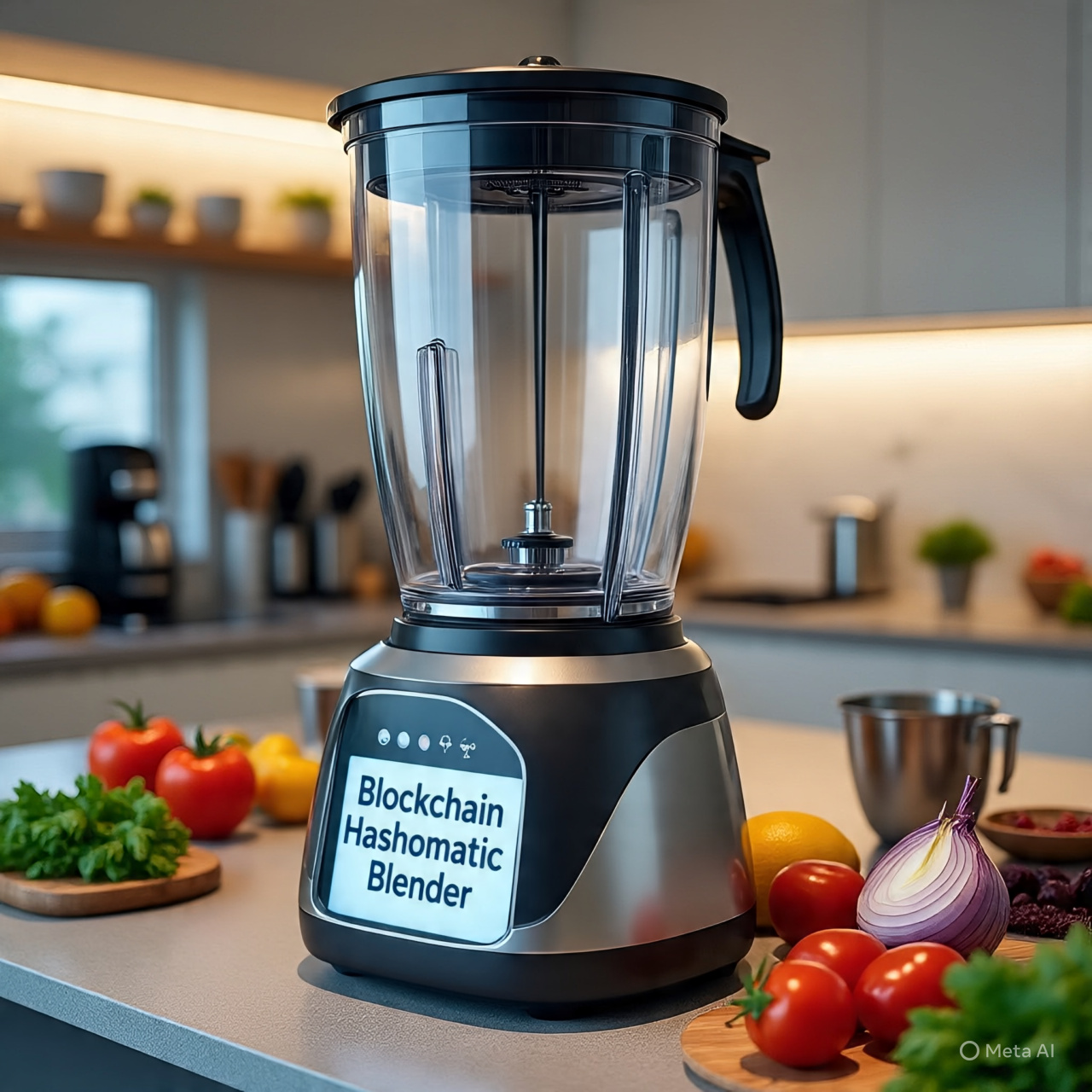
Unpacking the ‘Blockchain’
Unpacking the ‘Blockchain’
The Crypto Codger’s Corner: "Translating digital nonsense into plain, grumpy English."

Alright, settle down. I swear, the thing that bothers me most about this new digital world isn't the technology itself. It’s the names. The tech kids -- these Gen Xers and millennials who think they invented everything -- have a knack for taking a perfectly simple idea and wrapping it in a name so complicated and imposing that it scares normal people away. It’s a strategy. Back on Wall Street, we saw it all the time. Investment bankers would write a 300-page prospectus for a company that sold shoelaces, using language so dense you’d need a team of lawyers and three pots of coffee just to figure out they were, in fact, selling shoelaces. It’s designed to make you feel dumb so you have to pay them to feel smart.
Well, "Blockchain" is the heavyweight champion of this nonsense.
It sounds like something you’d find in a medieval dungeon or a factory that makes engine parts. It’s heavy, it’s industrial, it’s intimidating. And it’s all a big put-on. The idea behind blockchain is so straightforward, so commonsensical, that my grandfather would have understood it perfectly if you’d just explained it to him without all the digital gobbledygook.
So today, we’re going to do just that. We're going to ignore the hype artists and the tech evangelists. We're going to take this big, scary "Blockchain" machine, pry it open with a crowbar of common sense, and see that it’s really just a few simple, familiar parts cobbled together in a new way. Forget what you think you know. We’re starting from scratch.
Okay, Fine. Here’s What a Blockchain Actually Is.
I want you to forget about computers for a minute. Instead, I want you to imagine a small town. In this town, there's no bank. Instead, everyone keeps track of business in a special community record book. The book is kept in the town square for everyone to see.
Now, let's say Sally the butcher sells a prime rib to Bob the baker for ten dollars. They don't just want a flimsy receipt. They want it recorded officially. So, they walk to the town square and write it down on a new page in the record book: "Sally paid Bob $10 for prime rib. Monday, August 11th." A bunch of other transactions from the townspeople also get written on this same page.
At the end of the day, when the page is full, the town clerk comes out. She reviews the page to make sure it all adds up, declares it official, and then -- this is the important part -- she binds that page permanently into the main record book. But here’s the clever bit: before she binds it, she makes a magic, exact copy of the entire book, including the new page, and gives it to every single person in the town.
So now, hundreds of people have an identical, up-to-the-minute copy of the same record book.
If some wise guy tries to go back to an old page and change a record -- say, erase his debt to Sally -- he can't. Why? Because his book would no longer match the hundreds of other identical books held by everyone else in town. He’d be exposed as a fraud instantly. The system's security comes from the fact that it's shared and constantly verified by the community.
That, in a nutshell, is a blockchain. The "blocks" are just the pages filled with data (like transactions). The "chain" is the permanent binding that links all the pages together in chronological order. And the "decentralized network" is just all the townspeople holding an identical copy of the book, making it transparent and incredibly difficult to cheat.
Enter Bitcoin: The Original Recipe
So where does Bitcoin fit into all this? Simple. Bitcoin was the first real-world, large-scale use of our town’s record book system. It is that system.
The Bitcoin blockchain is the ledger book. The "data" written onto its pages, or blocks, are Bitcoin transactions --Person A sends X Bitcoin to Person B. That's it. That’s the information being recorded.
The "townspeople" are the thousands of computers all over the world that are part of the Bitcoin network. Each one holds a copy of the entire blockchain history. The "town clerks" are specialized computers called miners. They are the ones competing to do the work of gathering the latest transactions, bundling them into a new block (a new page), and adding it to the chain. The first one to successfully add the new block gets rewarded with some brand-new Bitcoin for their trouble. This reward is what incentivizes people to do the work of maintaining the record book.
So, when you hear about the Bitcoin blockchain, don't imagine something mystical. Just imagine a gigantic, global, public record book for Bitcoin transactions, where the pages are sealed shut in a very special way about every ten minutes. Which brings us to the security.
Hashing: The Unbreakable Digital Wax Seal
How do they "seal" the pages to make them tamper-proof? This is where the fancy math comes in, but the concept is as simple as a kitchen appliance. It's a process called hashing.
I want you to imagine a very powerful, very specific blender. Let's call it the "Hash-O-Matic 9000." You can put anything you want into this blender -- the complete works of Shakespeare, your daughter's wedding video, a single word -- and when you press the button, it instantly grinds it all down and spits out a short, unique string of letters and numbers. Let's say it's 64 characters long. This output is the "hash."
Here are the magic properties of the Hash-O-Matic blender:
It’s a one-way street. You can put the fruit in to make a smoothie, but you can never, ever turn that smoothie back into the original fruit. It’s impossible to take the hash output and figure out what the original input data was.
It’s incredibly sensitive. If you put Shakespeare's Hamlet into the blender, you get a specific 64-character hash. But if you change just one letter in the play—change "To be or not to be" to "To be or not to me"—and blend it again, you get a completely different 64-character hash. It won't be even slightly similar to the first one.
This is the digital wax seal. Each block (page) of the blockchain contains all its transaction data, plus the unique hash (the smoothie) of the previous block. This is what links them together, forming the chain.
If a fraudster tries to alter a transaction on an old block, the "ingredients" of that block change. When you run it through the Hash-O-Matic again, it produces a brand-new, different hash. That new hash will no longer match the hash that’s recorded in the next block, instantly signaling that tampering has occurred. It breaks the chain. To pull off the cheat, he'd have to re-calculate the hashes for every single block that came after it, all across thousands of computers, faster than everyone else. It's practically impossible.
So, we have a shared record book that is sealed with an unbreakable digital fingerprint. Why on earth does this matter to you? You’re not sending Bitcoin to buy a Tesla.
It matters because this is the first time in history we’ve had a reliable way to create a permanent, trustworthy record of something valuable without needing a central authority to vouch for it. For centuries, we’ve relied on banks, governments, lawyers, and credit card companies to be the "trusted" middlemen. But those middlemen are slow, they are expensive, and, let's be honest, they aren't always trustworthy themselves. They make mistakes, they get hacked, they have their own interests at heart.
This technology represents a fundamental change in how we prove ownership and verify truth. Imagine a world where your property deed isn't a piece of paper in a dusty courthouse but a tamper-proof entry on a blockchain. Imagine a world where your vote is recorded with absolute certainty and transparency.
This structure—this simple chain of boxes sealed with math—is the foundation. It's an invention on par with the printing press or double-entry bookkeeping. Ignoring it because the name sounds funny would be like ignoring the automobile because you were perfectly happy with your horse. The world is changing, and this is the engine.
The Codger's Takeaway
A blockchain is just a community record book. Nothing more, nothing less. Everyone holds a copy, so it's transparent and hard to cheat.
The "blocks" are the pages that hold the data (like transactions). The "chain" is the binding that links them together chronologically and permanently.
Bitcoin is simply the first, and most famous, organization to use this record book system to track its currency.
Hashing is the security sauce. It’s a one-way mathematical function, like a blender, that creates a unique digital fingerprint for each block. Change one tiny detail, and the whole fingerprint changes, exposing any fraud.
We've established that the structure is secure. It's strong. But security is only half the battle. How does this mathematical security translate into something we humans can actually trust our money and property with? How do we go from a clever system to a trustworthy one? That's a whole other can of worms.
Next week, we'll dive into that very question: how this network of strangers, using nothing but math and code, builds a level of trust that rivals some of our oldest financial institutions.
Look, you can try to piece this together from a thousand different confusing websites, or you can get the no-nonsense translation from the Codger, visit me at https://thecryptocodger.com/services and sign up for a time to take classes or speak with me one on one.
Now, get off my digital lawn.
The Crypto Codger